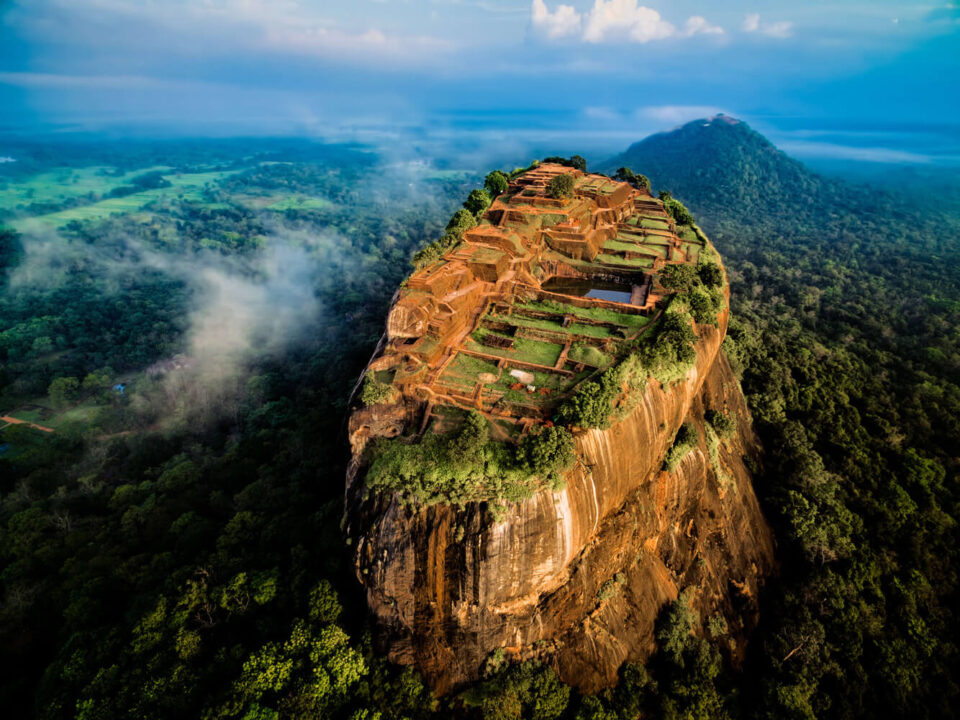Sigiriya (Sri Lanka) is a single rock with a height of 170 m and a fortress built on it in the Matale district, in the central part of the country.
A castle was built on top of the mountain, the walls of which are painted with unique frescoes. Some of the latter have been preserved to this day. Halfway to the summit, there is a plateau where arrivals are greeted by a huge lion-paw gate. According to one version, the fortress was built at the request of King Kassapa (Kasyap), and after his death the palace was deserted and stood abandoned. Until the 14th century, a Buddhist monastery operated on the territory of Sigiriya. Today, the attraction is included in the UNESCO World Heritage List and is under its protection.
Sigiriya is a unique tourist attraction
According to archaeological excavations, in the area adjacent to the mountain, people lived in the prehistoric period. Numerous grottos and caves are proof of this.
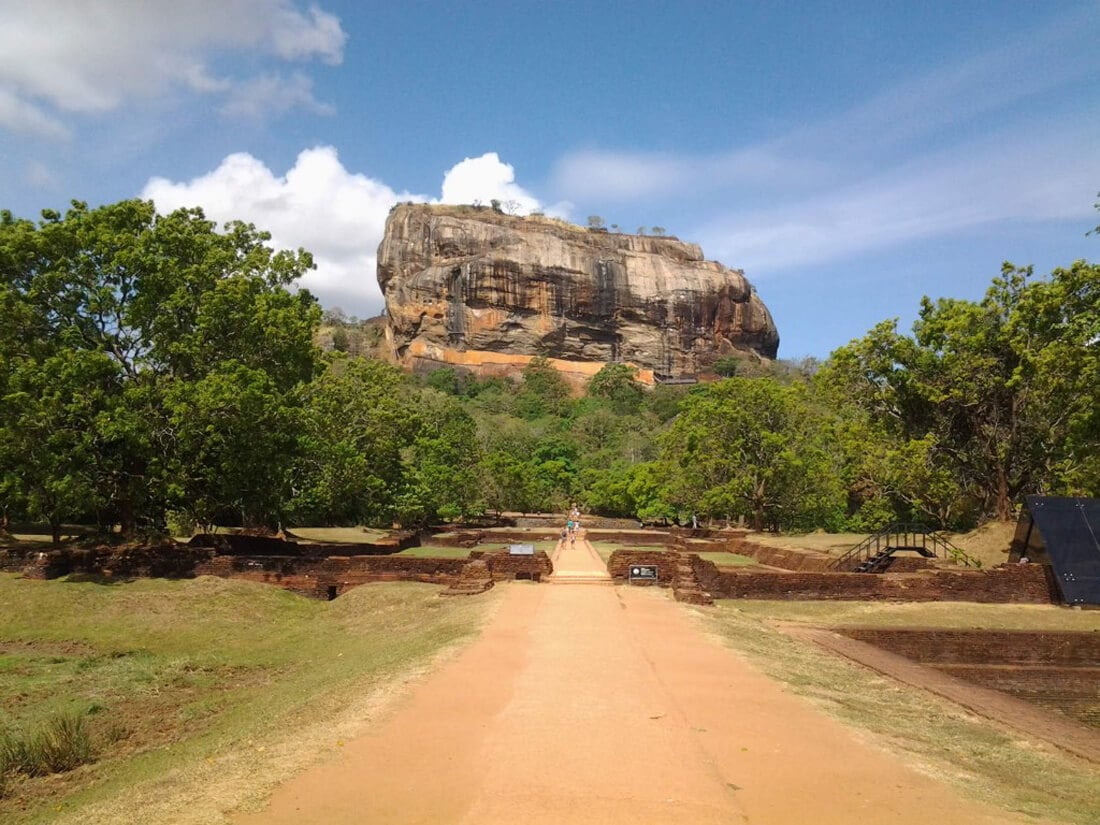
Photo: Sigiriya, Sri Lanka.
In 477, Kasyapa, who was born a commoner to a king, forcibly took the throne from the rightful heir Datusena, enlisting the support of the commander-in-chief of the army. The heir to the throne, Mughalan, was forced to hide in India to save his own life. After taking the throne, Kasyapa decided to move the capital from Anuradhapura to Sigiriya, where it was quiet and peaceful. This measure was forced, because the self-proclaimed king was afraid that he would be overthrown by the one to whom the throne belongs by birthright. After these events, Sigiriya became a real urban complex, with well-designed architecture, defensive structures, a fortress and gardens.
In 495, the illegitimate monarch was deposed, and the capital once again returned to Anuradhapura. And on the top of Sigiriya Rock, Buddhist monks settled for many years. The monastery functioned until the 14th century. About the period from the 14th to the 17th centuries, no information about Sigiriya has been found.
Legends and myths
According to one legend, Kassapa, wanting to take the throne, killed his own father, immuring him alive in the wall of a dam. Kasyapa’s brother Mughalan, who was born to the queen, left the country, but vowed revenge. In South India, Mughalan raised an army and, on his return to Sri Lanka, declared war on his illegitimate brother. During the struggle, the army betrayed Kassapa, and he, realizing the hopelessness of his situation, committed suicide.
There is a version that the army did not deliberately abandon its leader. During another battle, Kasyapa’s elephant suddenly turned in the other direction. The soldiers took the maneuver as the king’s decision to escape and began to retreat. Kassapa, left alone, but proud and unyielding, drew his sword and cut his own throat.
Archaeological digs and amazing finds
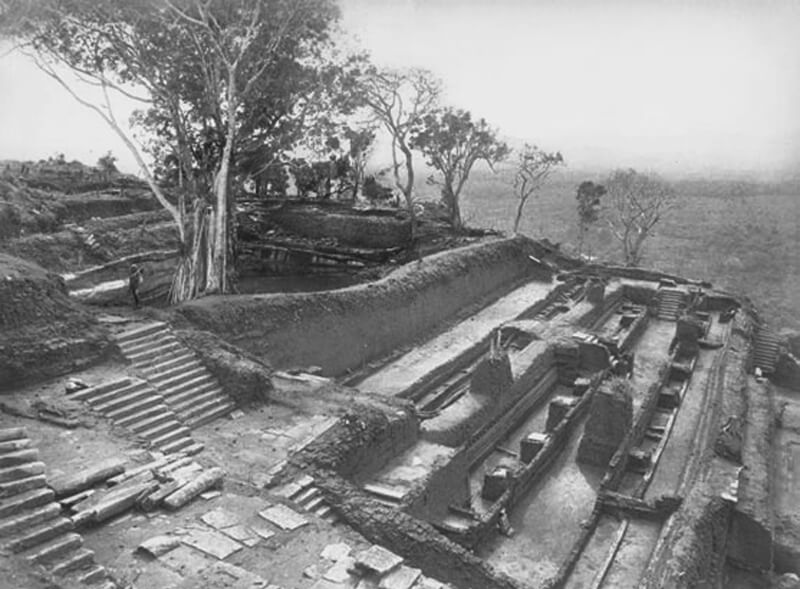
Sigiriya (Lion’s Rock) was discovered by Jonathan Forbes, a British soldier, in 1831. At that time, the top of the mountain was heavily overgrown with bushes, but immediately attracted the attention of archaeologists and historians.
The first excavations began 60 years later in 1890. A full-scale excavation was carried out as part of the Sri Lankan state project “Cultural Triangle”.
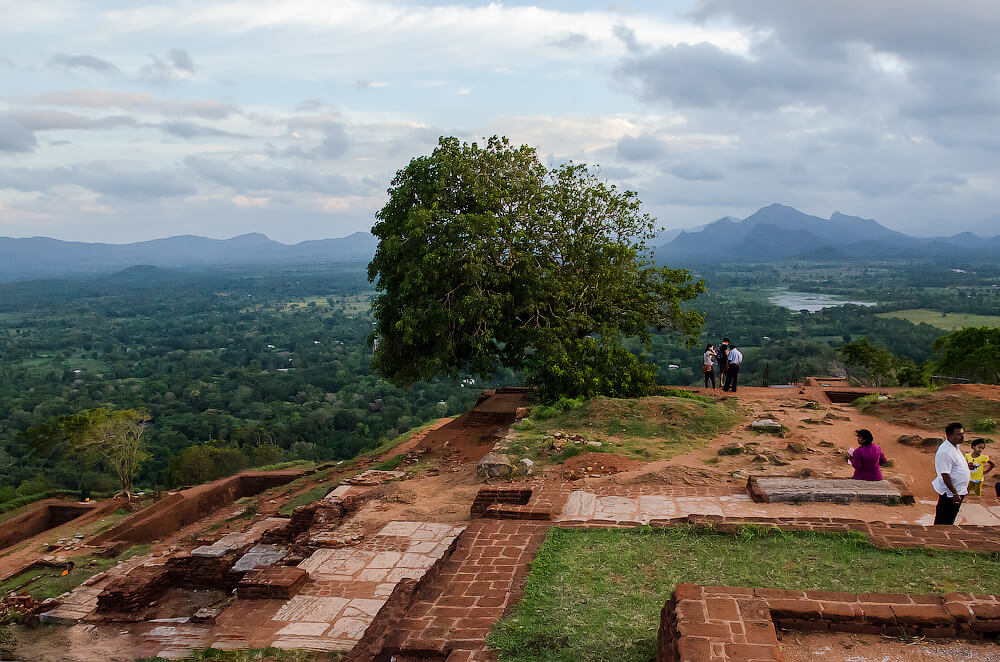
Sigiriya is an ancient citadel built in the 5th century. The historical and archaeological area consists of:
- the palace on top of the Lion Rock;
- terraces and gates that are located approximately in the center of the mountain;
- mirror wall decorated with frescoes;
- lower palaces that hide behind lush gardens;
- fortress moats that perform a protective function.
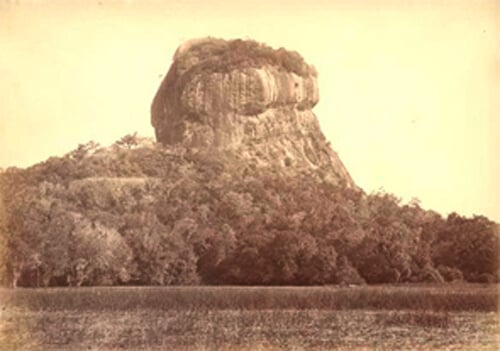
Archaeologists note that the Sigiriya Fortress (Lion Rock) in Sri Lanka is one of the most striking buildings in the world, which dates back to the 1st millennium, and is relatively well preserved. The city plan surprises with an incredible variety and exceptional thoughtfulness for that time. According to the plan, the city harmoniously combines symmetry and asymmetry, and man-made buildings are artfully woven into the surrounding landscape, without disturbing it at all. In the western part of the mountain there is a royal park, which was created according to a strict symmetrical plan. A complex technical network of hydraulic structures and mechanisms has been created for watering plants in the park area. In the southern part of the rock there is an artificial water reservoir, it was used very actively, since Mount Sigiriya is located in the arid part of the green island of Sri Lanka.
Murals
The western slope of the Lion Rock is a unique phenomenon – it is almost completely covered with ancient frescoes. That is why the surface of the hill is called a giant art gallery.
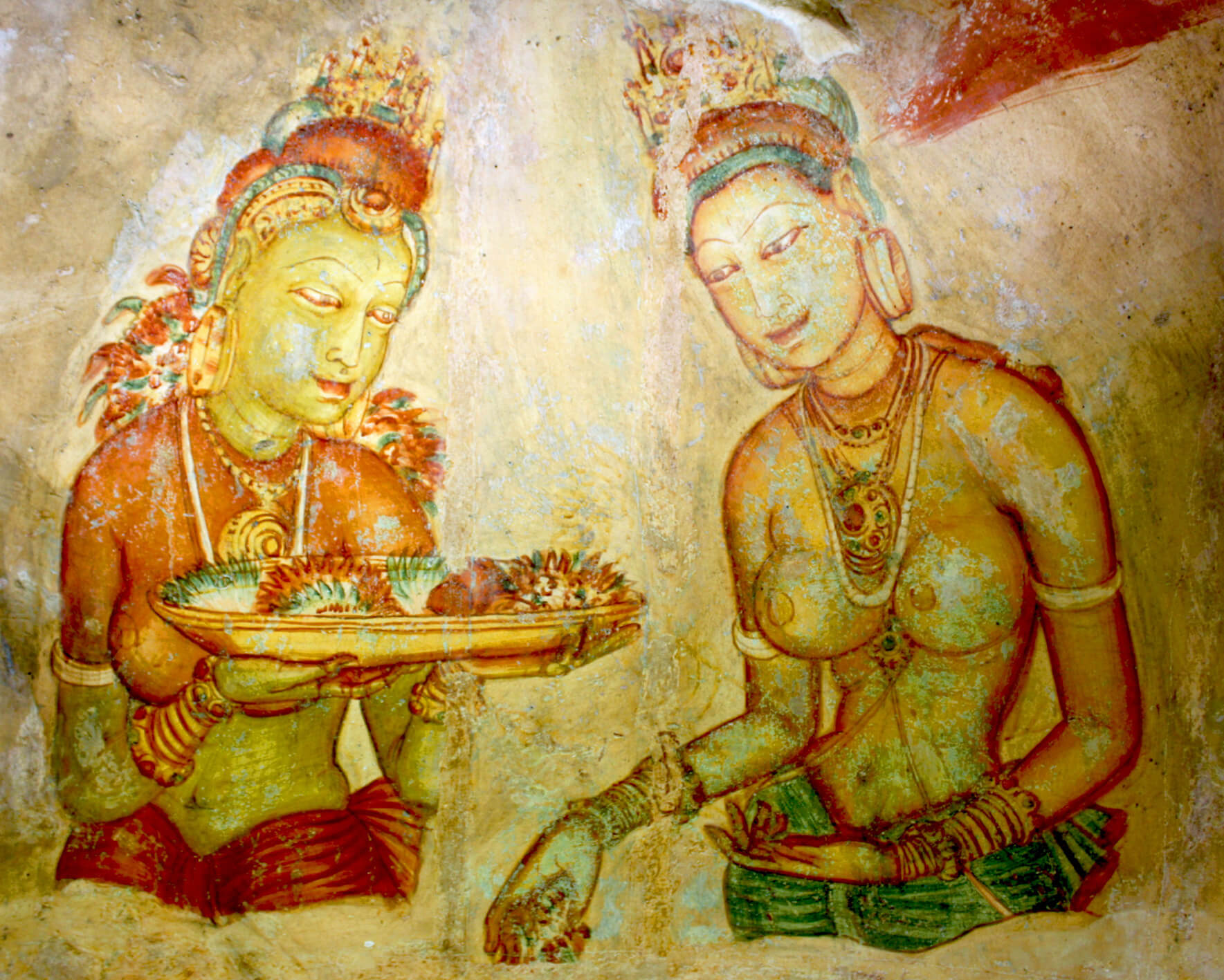
In the past, the paintings covered the entire slope on the western side, and this is a surface area of 5600 sq. m. According to one version, the frescoes depicted 500 girls. Their identity has not been established, and different sources make different assumptions. Some believe that the frescoes are images of court ladies, while others believe that these are girls who took part in religious rites. Unfortunately, most of the drawings have been lost.
Mirror wall and the path to the frescoes
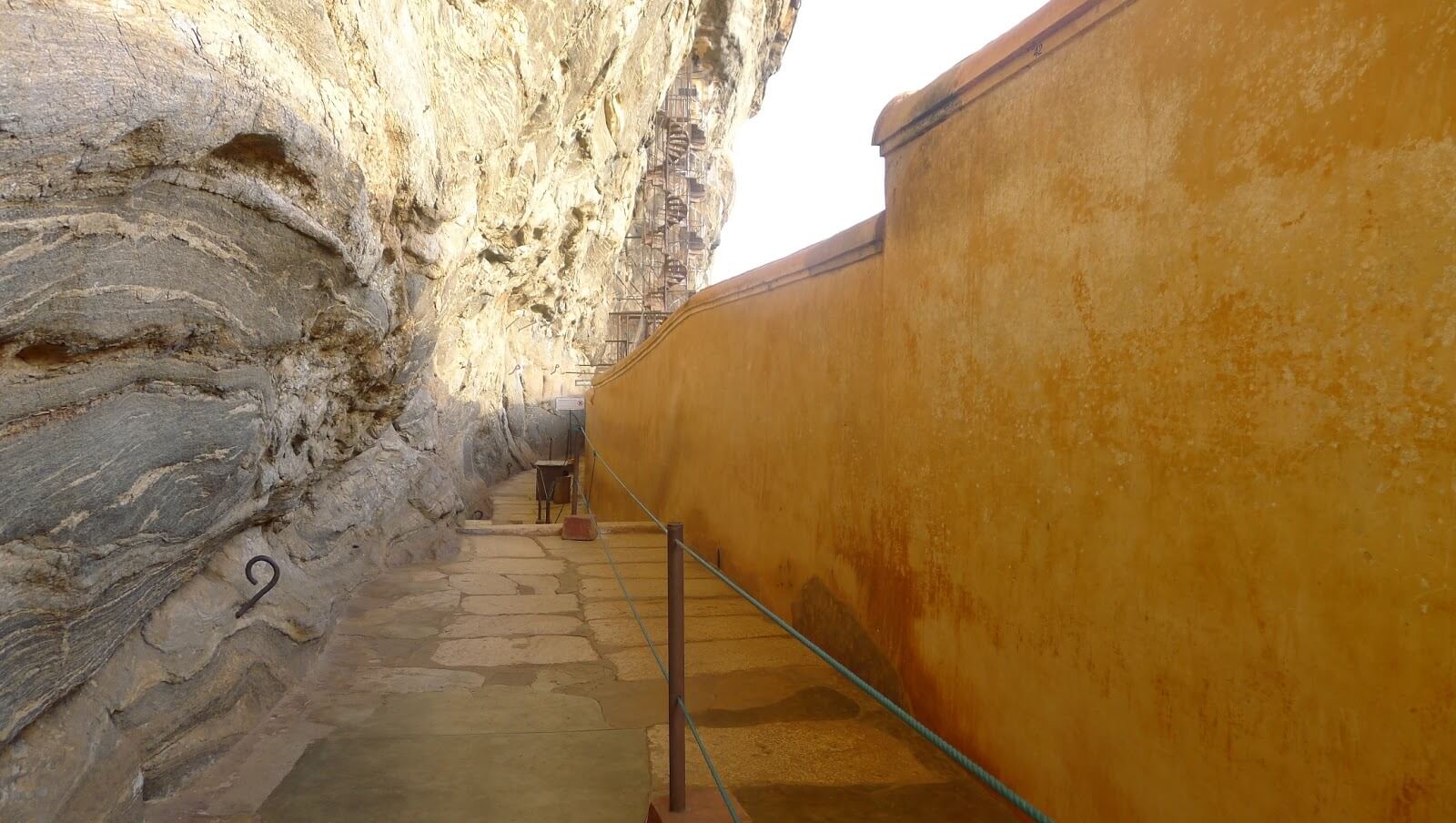
During Kasyapa’s reign, the wall was regularly polished so that the monarch, walking along it, could see his own reflection. The wall is made of brick and covered with white plaster. The modern version of the wall is partially covered with various poems and epistles. On the wall of the Lion Rock there are also inscriptions that date back to the 8th century. Now it is impossible to leave a message on the wall, the ban was introduced to protect ancient inscriptions.
The Gardens of Sigiriya
This is one of the main features of Sigiriya, because the gardens are included in the list of the oldest landscaped gardens in the world. The garden complex consists of three parts.
Water gardens

They can be found in the western part of Lion Rock. There are three gardens here.
- The first garden is surrounded by water, connected to the territory of the palace and fortress complex by 4 dams. Its uniqueness lies in the fact that it is designed according to the oldest model and there are very, very few analogues that have survived to this day.
- The second garden is surrounded by pools where streams flow. There are fountains in the form of round bowls, they are filled with an underground hydraulic system. The fountains are open during the rainy season. On both sides of the garden are islands where summer palace residences are built.
- The third garden is higher than the first two. In its north-eastern part there is a large octagonal pool. In the eastern part of the garden there is a fortress wall.
Stone Gardens
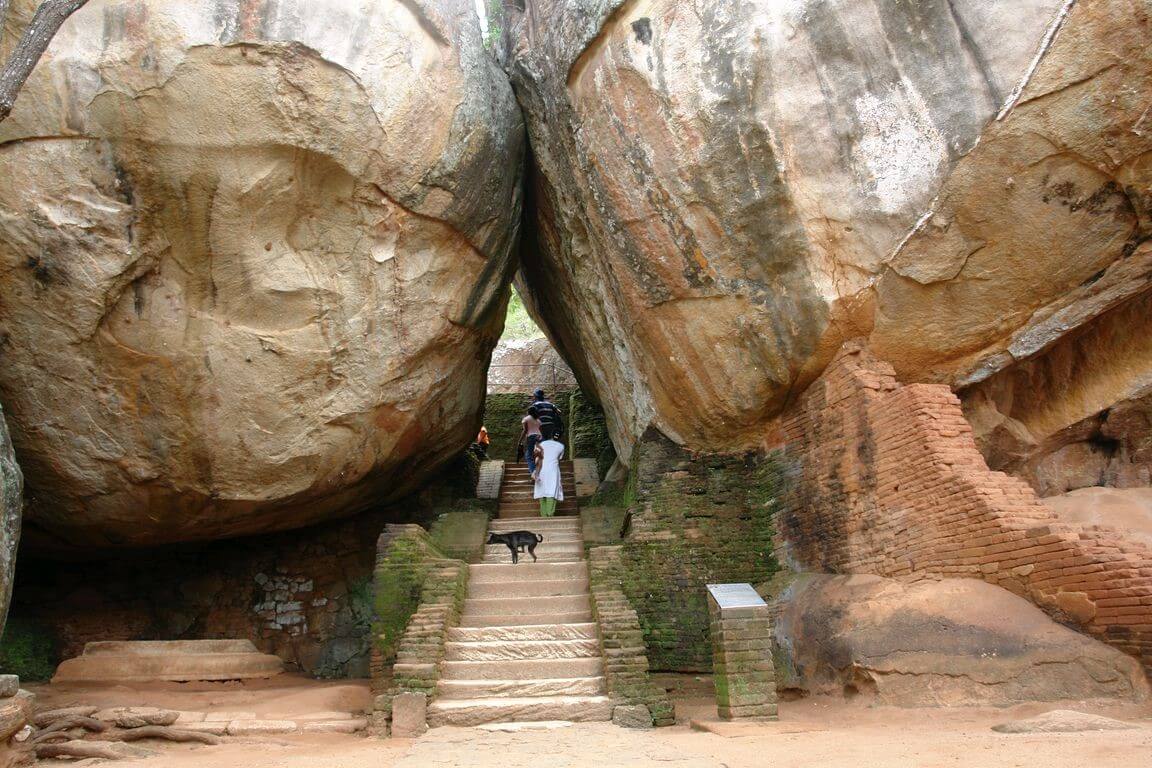
These are huge boulders, between which there are walking paths. Stone gardens can be found at the foot of Lion Mountain, along the slopes. The stones are so large that most of them were built on buildings. They also served a defensive function – when enemies attacked, they were pushed down on the attackers.
Terraced gardens
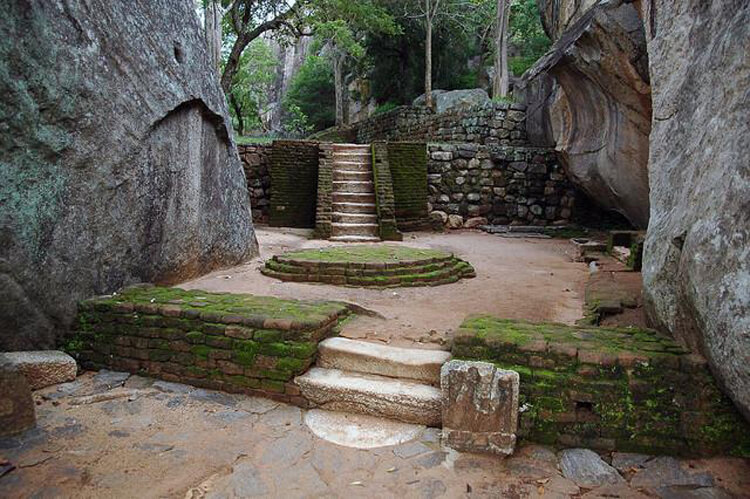
These are terraces around the cliff at natural elevations. Some of them consist of brick walls. Access from one garden to another is via a limestone staircase that leads to the topmost terrace of Sigiriya Castle in Sri Lanka.
How to get there
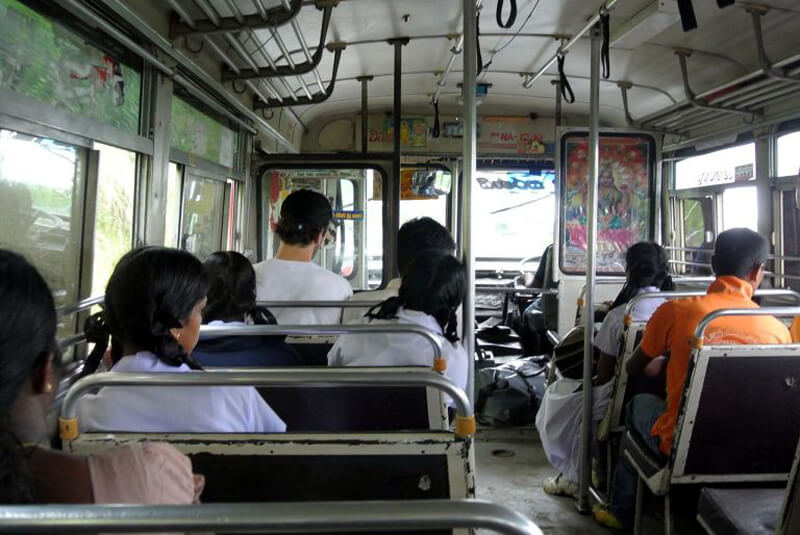
You can go to the sights from any city on the island, but you will have to make a transfer in Dambulla. Bus lines No. 549/499 run regularly from Dambulla to Sigiriya. Flights depart from 6-00 to 19-00. The journey takes only 40 minutes.Possible routes to Sigiriya
- Colombo-Dambulla-Sigiriya. This route is the most convenient, as you can buy a ticket for comfortable public transport with air conditioning. From Colombo (Pettah bus station) in the direction of the popular Dambulla is the largest number of buses.
- Matara-Colombo-Dambulla-Sigiriya. There is a train and bus service from Matara to Colombo. The journey takes about 4.5 hours. There is also a bus number 2/48 from Matara Bus Station to the transfer point, and comfortable air-conditioned flights will take you to Dambulla in 8 hours. Similar flights can be used if you are in Panadura and Tangalla.
- Kandy-Dambulla-Sigiriya. Buses from Kandy run from early morning until 21-00. You can get there by many flights, please check the number directly at the station.
- Anuradhapura-Dambulla-Sigiriya. Anuradhapura is served by flights No. 42-2, 15-1.
- Trincomalee-Dambulla-Sigiriya. Two regular buses — Nos. 45 and 49-leave for the transfer point.
- Polonnaruwa-Dambulla-Sigiriya. You can get to the transfer point by regular buses No. 41-2, 46, 48/27 and 581-3.
- Arugam Bay-Monaragala-Dambulla-Sigiriya. In Arugam Bay, you need to take the bus number 303-1, the journey takes 2.5 hours. Then, in Monaragala, you need to transfer to the bus number 234 or 68/580.
Interesting facts
- According to one legend, Kasyapa immured his father alive in a dam when he found out that he was not as rich as he thought.
- Evidence of the first human appearance in Sigiriya is found in the Aligala grotto, which is located to the east of the mountain fortress. This proves that people in this area lived about 5 thousand years ago.
- The west gate of Sigiriya Castle, the most beautiful and luxurious, was only allowed to be used by members of the royal family.
- Mount Sigiriya in Sri Lanka is a rock formation that formed from the magma of a once active volcano. Today it is destroyed.
- Experts note the unique technique in which all the frescoes are made-the lines were applied in a special way to give the drawings volume. The paint was applied in sweeping strokes with one-sided pressure, so that the color was more saturated at the edge of the image. In terms of technique, the frescoes resemble images found in the Indian caves of Ajanta.
- Sri Lankan experts have deciphered more than 680 verses and inscriptions made on the wall in the period from the 8th to the 10th centuries AD.
- The water gardens of the complex are located symmetrically relative to the east-west direction. In the western part, they are connected by a moat, and in the south – by an artificially created lake. The pools of the three gardens are connected by an underground pipeline network.
- The boulders that are now the stone garden were used in the past to fight the enemy-they were thrown off the cliff when the enemy army approached Sigiriya.
- The lion shape for the gate was chosen for a reason. The lion is a symbol of Sri Lanka, is depicted on the state symbols and represents the ancestor of the Ceylonese.
This is interesting! The climb to the top of Lion Rock takes an average of 2 hours. Along the way, you will probably meet flocks of wild monkeys begging tourists for treats.
Useful information for tourists

Entrance fee:
- adult – 4,650 rupees, approximately$30;
- children’s – 2,325 rupees, about$15.
Admission is free for children under 6 years of age.
The Rock Palace complex is open from 7-00 to 18-00. The sales register is open only until 17: 00.
The user receives a ticket that consists of three separate parts. Each part gives you the right to visit:
- main entrance;
- mirror wall;
- the museum.
It is important! The exposition in the museum is weak and not very interesting, so you can not even waste time visiting it.
The best time for a tour is from 7: 00, when there is no exhausting heat. You can also explore the attraction after lunch – at 15-00, when the number of tourists decreases. Be sure to bring water with you, since you will have to walk for at least 3 hours, and water is not sold on the territory of the complex.

The best weather conditions for visiting Sigiriya are from December to April or from mid-summer to September. At this time, in the central part of Sri Lanka, it rarely rains, the weather is most favorable for visiting the castle. Most of the precipitation falls in April and November.
It is important! The most popular entertainment among tourists is to meet the sunrise in Sigiriya. To do this, choose a clear period so that the sky is not covered with clouds.
Sigiriya (Sri Lanka) – an ancient complex on a rock, which is recognized as the most visited on the island. This is a unique historical architectural monument that can still be admired today.

